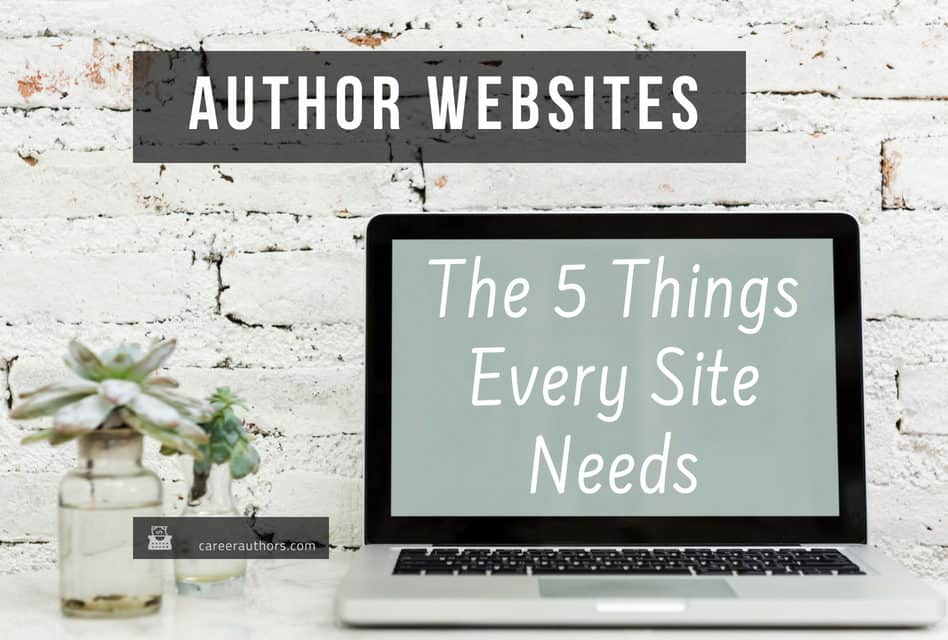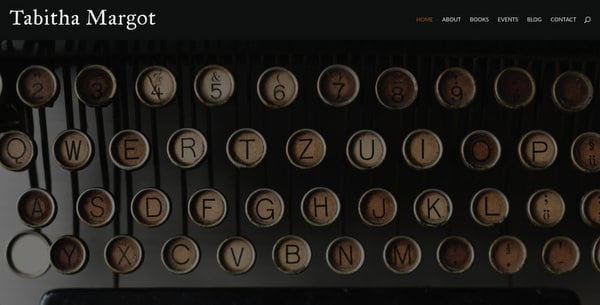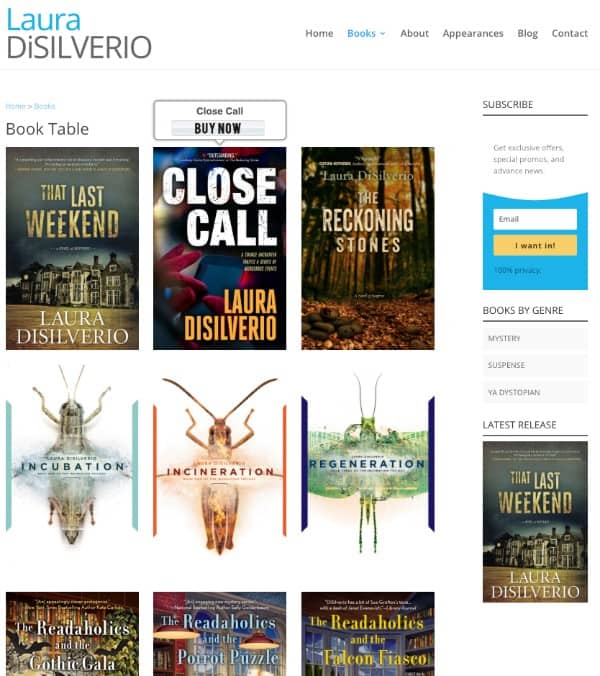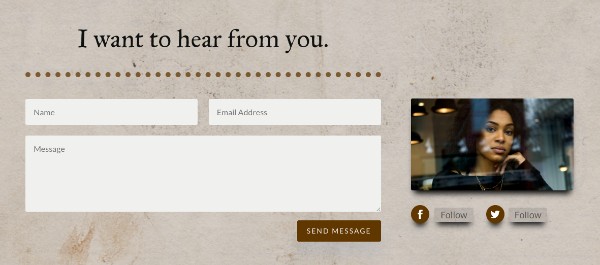Your author website has one purpose: to sell books.
It helps you sell books by giving your readers what they need and by supporting your writer goals. Together, these combine to perform the following functions that help your readers connect with you:
- Express your brand (to show ideal readers they belong here – and should buy your books)
- Get newsletter sign-ups (to build devoted fans, who will make future purchases)
- Showcase your catalog (to inspire purchases)
- Include a contact form (to make yourself more accessible – in order to sell more books)
But before including content to accomplish these, you first need to know one important truth about your author website.
It’s not about you
Your author website serves your readers.
And your readers are all wrestling with the same question, which your site helps them solve: What should I read next?
At a glance, your site needs to answer whether your books, in general, are the type this reader wants.
Your author brand must suggest this.
In detail, your site needs to assure your ideal reader that you can be trusted to deliver the experience she is looking for. That whatever she is hoping to feel – whatever kind of person she wants to be with your books in hand and your story in mind – is the kind of author you are.
The remainder of your site must prove this.
Here’s how.
Express your author brand
Your author site’s at-a-glance purpose is to express your author brand. Within seconds it must convey your genre and your personality. This doesn’t mean it has to be beautiful or expensive; most sites don’t warrant a big investment. But it must express enough of you that a visitor who drops in can tell that she belongs here.
If you have book covers and imagery that convey your brand, consider showcasing those.
A visitor to Hank Phillippi Ryan’s website instantly recognizes suspense, success, and intrigue.
Even without elaborate design, an evocative image and appropriate color scheme can convey plenty.
A visitor to (fictional writer) Tabitha Margot’s site is being promised something atmospheric and noir.
Must-have elements
Beyond its initial aesthetic, your site must include elements to help connect you with your readers and to demonstrate that your words are worth her time.
Connecting is most important.
1. Sign up
Your mailing list, to which you send your email newsletter, is your most valuable marketing asset. It and your author website are your owned properties, the permanent foundation of your author platform. Being yours, they outlast social fads and let you market directly to your most ardent fans – and on your own terms.
Everything beyond your owned properties is digital sharecropping, subject to external caprice: out of your control and subject to slippery rules, here today and gone tomorrow.
Building that mailing list is why you need a sign-up form, and a prominent one. That form can be a dedicated splash page, a pop-up, or the home page itself (the method I favor).
Boost your sign-ups by offering a reader magnet, a downloadable prize that would delight your ideal reader. Perhaps it’s a short story set in the world of your series. Maybe it’s a prequel or a prologue that includes a character your reader cares about or answers a critical story question.
In any case, the reader magnet need not be long, but it must be self-contained (which means, for example, not using the first 10,000 words of your novel).
Self-publishing maven Mark Dawson shows an ideal model for using his home page for no purpose other than this.
2. About
Readers expect this page. Don’t disappoint them.
For your author bio, be anything but sterile. Length is not important, but being distinctive is. Can you imagine anything more distinctive than detective-writer Tabitha Margot?
In your bio, talk directly to your ideal reader. That one person, who, when reading your books and your bio, thinks, “She really gets me.” And then prove that you do.
3. Books
Each book needs its own page with a cover image, a brief description, blurbs, and buy buttons. Maybe an excerpt. And if you have numerous series, add a page that shows how they’re all organized. Laura DiSilverio pulls this off in an elegant fashion.
4. Contact
In addition to the standard email contact form, this must include how readers can find you on your favorite social media channels – the place at the intersection of where your devoted fans hang out and where you find joy in participating.
One or two such social media channels are plenty. You’ll be spread too thin if you try to maintain meaningful profiles in more than that. Instead of trying to be everywhere, write your novels instead.
No need to get fancy. Readers know how to use these pages. Don’t put any barriers in the way.
5. Social proof
Just as your book’s cover included blurbs to indicate social proof, so should your author site. Where you put these is not so important.
But don’t be shy. Let the praise be effusive, as long as it’s coming from someone else.
All such praise is an invitation to your ideal reader. Its purpose is to say, “People like us read books like these,” and by buying these books you, the new ideal reader, are choosing to belong – to feel part of something bigger.
Your site exists to promise an experience. Let the act of buying your book deliver to your new fan the experience of connecting with like-minded readers.
Optional elements
Include these only if you have reason to.
6. Blog
Do you have to blog? No.
Most fiction authors shouldn’t. All non-fiction authors should.
For most fiction authors, blogging saps their creative energy, adds to their workload, and – most importantly – doesn’t serve their readers.
You might be the exception (but you’re probably not). Arguments that you should blog in order to boost your SEO or help with content marketing or keep your site “fresh” are all countered by the effort it takes to accomplish any of those well.
Don’t blog. Write your novels instead.
7. Appearances
This is fully optional, but your readers will appreciate being able to find you if you make numerous public appearances. However, a calendar with few (or only historical) appearances is worse than no calendar at all.
Does your site have what you need …
… and nothing else?
Keep it focused. Your author site is not the place for your unrelated philosophical musings, for your side hustle, or to bolster your ego. It’s to sell books by connecting with readers.
Do your experiences differ? What did we miss? Let on know on the Career Authors Facebook page.
Note: Several examples here are from the template site of my fictional author, Tabitha Margot, at yourauthorsite.com. Go there to see the examples in practice or to learn more about affordable websites for authors.










